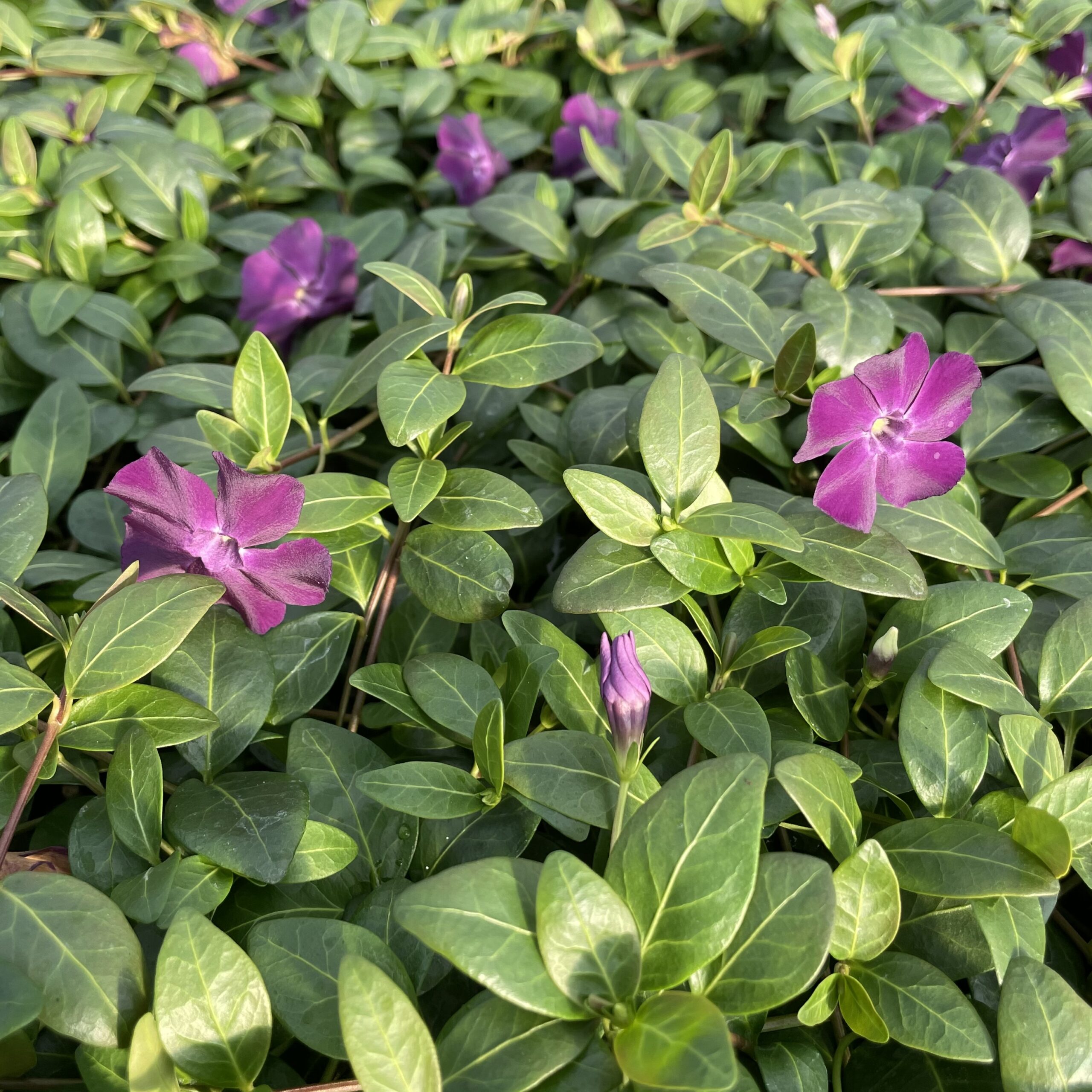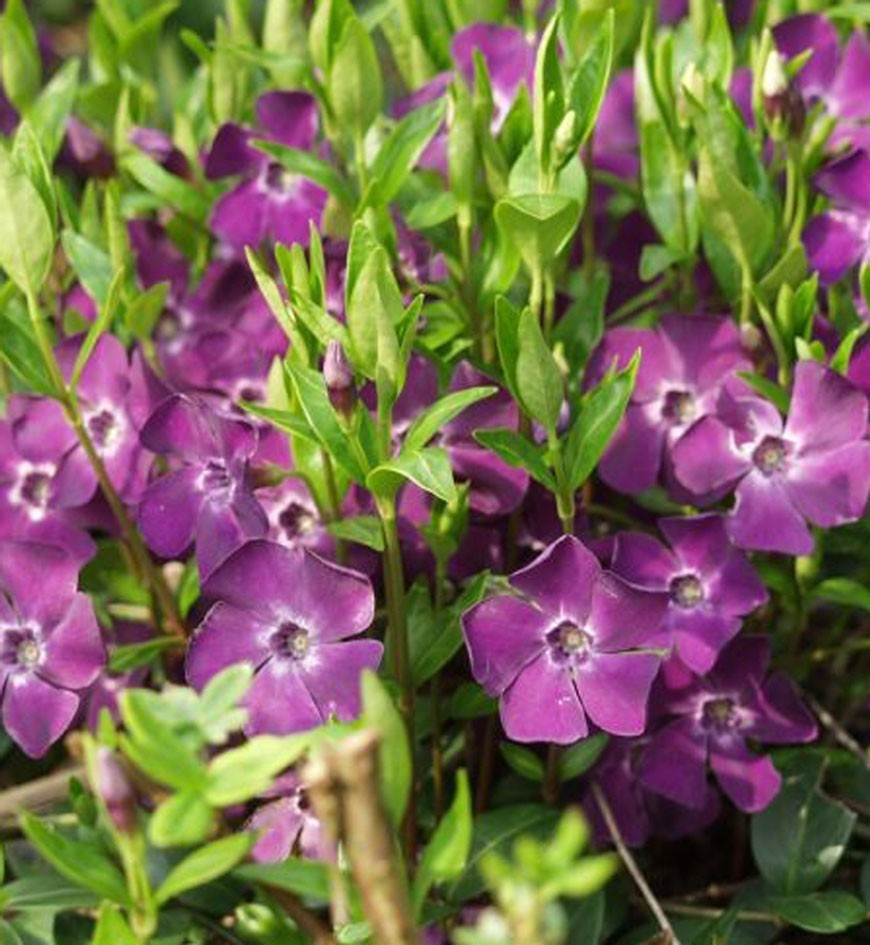
The style is green the stigma is densely pubescent and white (2, 3, 5, 12, 18, 21).įlowering Time: In Illinois, V. The superior green gynoecium is two-carpellate. The flower has five stamens the anthers are yellow and their tips are finely pubescent. The corolla is approximately 2.5 cm in diameter. The petals radiate from the center in an almost pinwheel-like shape forming an 8-12mm long tube with a white crest that is finely pubescent near the base.

The calyx is five-lobed, green, and glabrous. It is showy, purple to blue and occasionally white, borne singly in an axillary position on a 1-1.5cm pedicel. comm.).įlower Description: The flower is perfect and without odor. Gardeners suggest that it only weakly climbs with apical shoots, if at all (R.J. The veins are usually white, and latex can be found in the stems and leaves (1, 3, 4, 5, 6, 19, 21).Ĭlimbing Mechanism: Two sources mention Vinca twining (3, 12), but not in detail. They are glossy, pinnately veined, entire, and have margins that curl away from the sun.

The leaves are oblong-ovate to elliptical, approximately 2-5 cm long and 1-2.5cm wide, with petioles 1-3mm long. Its leaves are simple and arranged oppositely on the stem, though sometimes the nodes are so close together that two pairs of leaves seem to form a whorl. The plant forms thick sprawling mats with the flowering stems more or less erect. The stems are smooth, green, round, sometimes pubescent, and often hollow, although it does produce woody rhizomes. Vegetative Plant Description: Vinca minor is a perennial, evergreen vine. It is now found in every state east of the Mississippi River (and every state directly west of the river) as well as AZ, KS, ME, NE, OR, UT, TX, WA, and Washington D.C. No source giving an exact elevational distribution was found.Ĭomplete Geographic Distribution: Native to Europe, Vinca minor was introduced to America in the 1700s as an ornamental ground-cover. minor prefers low to mid-level elevations, but not the higher Rocky Mountain altitudes. Known Elevational Distribution: The geographic distribution suggests V. Geographic Distribution in Michigan: Vinca minor is reported from about half of Michigan’s counties with sporadic distribution (4). Its leaves are noted to yellow in intense sun and heat (1, 5, 6, 21). It is often found in woods and bluffs, and along cemeteries, roads, and other disturbed areas. minor grows best in partial shade and moist, well-drained soil. Most Likely Confused with: Lonicera caprifolium, Vincetoxicum spp. Subspecies/varieties recognized (source): None found (11). Plant Height: Stems trail up to 3m those with flowers erect to 15 cm (1, 21).

¬ Round, green, hollow stems, with those that bear flowers erect ¬ Flowers petals pin-wheeling out from center ‘ Minor‘ means “less,” distinguishing it from a larger species of the genus Vin ca, V. It means “bonds through bonds” and refers to the tangling nature of the plant (13). Common Names: Common periwinkle, Myrtle (6), Ground Myrtle (5), Running Myrtle, Lesser Myrtle (21)Įtymology: Vinca comes from the ancient Roman name for the plant, “Vincapervinca”, from which comes “periwinkle” (18).


 0 kommentar(er)
0 kommentar(er)
